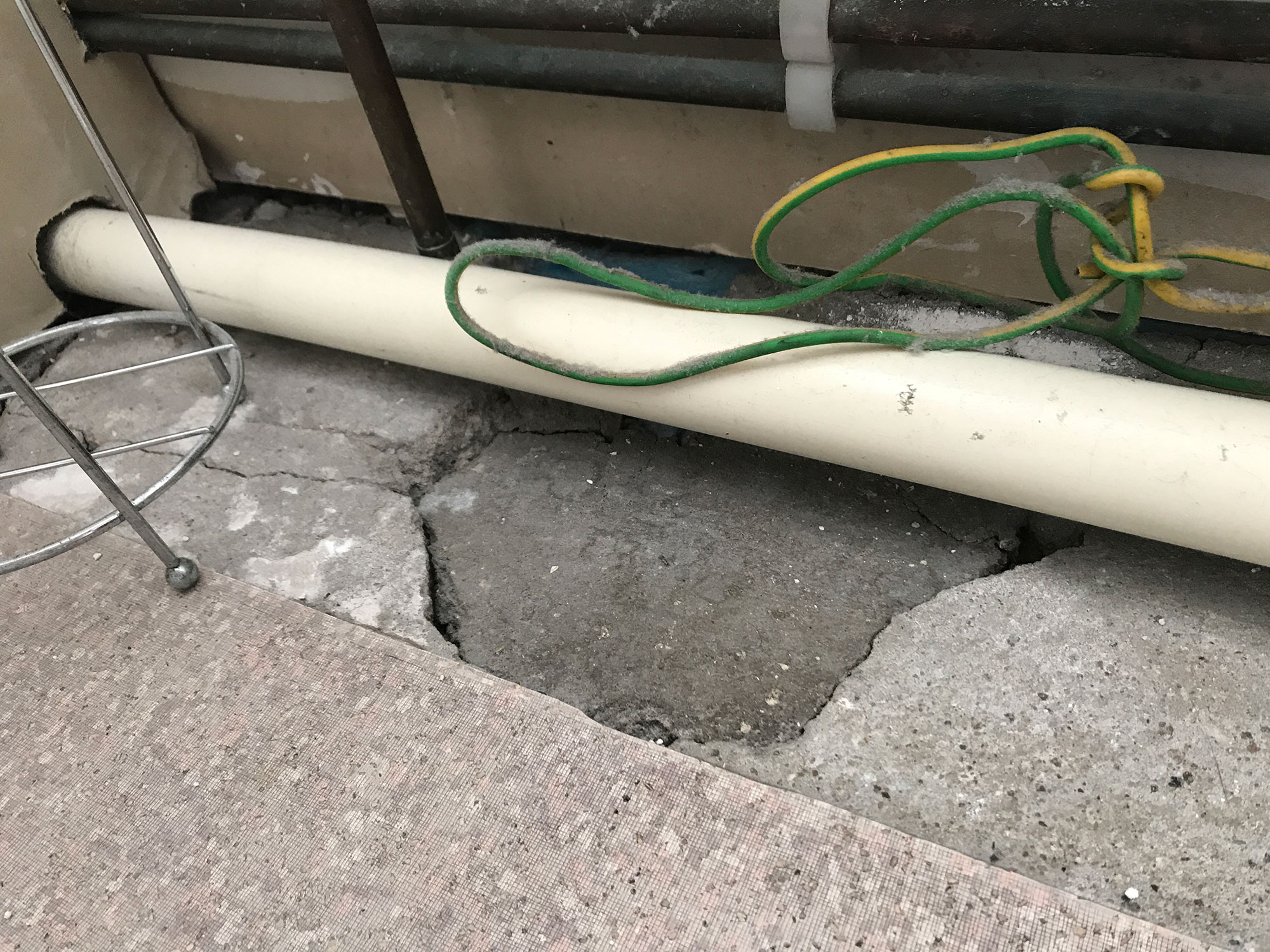Hi
I am renovating a bathroom and first up is to sort the concrete floor. Going to pour a levelling compound then vinyl tiles.
However there are currently a couple of deep holes in the concrete screed - caused, I think, as part of the original installation of radiator pipes - these are now redundant (been replaced by copper pipes above the floor). These have been badly repaired with the patches crumbling and not adhereding to the original concrete.
Untouched, the 'repairs' look like this:
Once I have cleared out one of the broken patches I found it was sitting on a load of loose vermiculite and a blue membrane - no wonder the patch was loose!
The property is a third floor flat built c.2005 with I think concrete screed over concrete slab floors in a steel frame. You can see the slab underneath here:
To make a good repair I want to remove all the blue membrane, clean out th hole thoroughly and fill it with fresh concrete (possibly with a bonding slurry - OPC and PVA - in between).
I am however not confident that I should remove the blue membrane as I am not clear why it is there. Surely it isn't a DPM (on a third floor flat)? Is it for thermal insulation?
Cutting out the blue membrane I feel a could make a good patch, but putting a patch ontop of it is never going to be stable.
Can anyone clarify what the membrane is likely for and what will be the impact of not having a patch of it under the repair?
Thanks
Jim (competent DIY'er, but far from expert!)
I am renovating a bathroom and first up is to sort the concrete floor. Going to pour a levelling compound then vinyl tiles.
However there are currently a couple of deep holes in the concrete screed - caused, I think, as part of the original installation of radiator pipes - these are now redundant (been replaced by copper pipes above the floor). These have been badly repaired with the patches crumbling and not adhereding to the original concrete.
Untouched, the 'repairs' look like this:
Once I have cleared out one of the broken patches I found it was sitting on a load of loose vermiculite and a blue membrane - no wonder the patch was loose!
The property is a third floor flat built c.2005 with I think concrete screed over concrete slab floors in a steel frame. You can see the slab underneath here:
To make a good repair I want to remove all the blue membrane, clean out th hole thoroughly and fill it with fresh concrete (possibly with a bonding slurry - OPC and PVA - in between).
I am however not confident that I should remove the blue membrane as I am not clear why it is there. Surely it isn't a DPM (on a third floor flat)? Is it for thermal insulation?
Cutting out the blue membrane I feel a could make a good patch, but putting a patch ontop of it is never going to be stable.
Can anyone clarify what the membrane is likely for and what will be the impact of not having a patch of it under the repair?
Thanks
Jim (competent DIY'er, but far from expert!)




